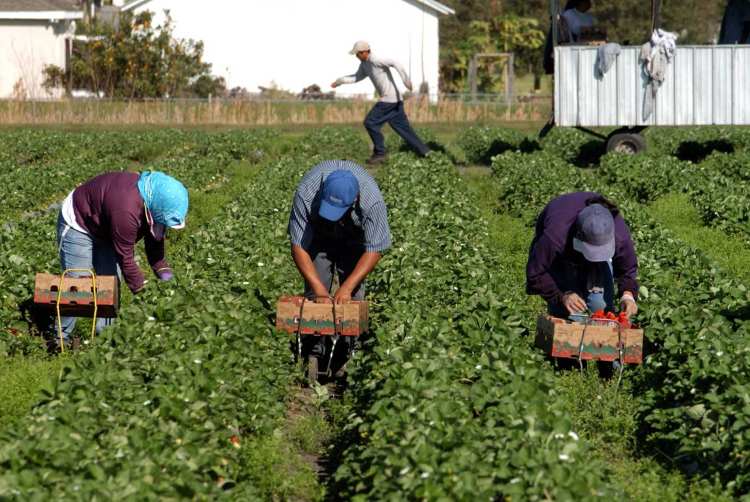
Marginalisation of agricultural labourers: The Thirukkural’s verse 1031 declares: “However they roam, the world must follow still the plougher’s team; though toilsome, culture of the ground as noblest toil esteem.” The timeless words underscore the centrality of agriculture to human survival, and the dignity of those who till the land. For India, where much of the population is engaged in agriculture or the unorganised sector, the message resonates with renewed urgency. Persistent poverty, inequality, and unemployment demand inclusive policies that bridge developmental gaps and place agricultural labourers at the heart of economic discourse.
Agricultural labourers are among the most marginalised in India’s workforce. Their numbers grew from 107.4 million in 2001 to 144.3 million in 2011, driven by shrinking landholdings, rising population, limited local employment, the decline of small industries, farmer evictions, and indebtedness. The COVID-19 pandemic worsened these pressures. Women form a growing share of this workforce but face compounded barriers of wage insecurity, limited mobility, and entrenched social discrimination.
Behind these statistics lies human distress. National Crime Records Bureau data show that between 2015 and 2022, more than 40,000 agricultural labourers took their own lives—driven by family problems, ill health, substance abuse, poverty, debt, and unemployment. Many tragedies remain unreported, particularly among women and children, who face the harshest exclusions.
READ I India-China trade tensions to persist despite SCO diplomacy
Multiple layers of exclusion
Exclusion among agricultural labourers is multidimensional. Socially, the community is divided not only by caste but also by class, occupation, gender, and rural location. These overlapping identities limit access to state benefits and social mobility, making exclusion more entrenched. Economically, indebtedness, financial illiteracy, lack of workplace protections, and the absence of social security deepen fragility. Most workers remain dependent on intermediaries for credit and survival, leaving them vulnerable to exploitation.
Cultural factors aggravate the problem. Ritual obligations and social expectations often compel families to borrow beyond their means. The demonstration effect—keeping pace with community standards—adds to the debt trap. Illiteracy and high school dropout rates further perpetuate poverty across generations. Political marginalisation compounds the crisis. Agricultural labourers are rarely organised into unions, have little representation in social or political institutions, and are largely absent from labour policy debates. Illiteracy, caste divides, and dependence on landowners prevent the formation of an independent identity, leaving them without bargaining power.
The lives of agricultural workers are further strained by climate change. Rising temperatures, prolonged heatwaves, erratic rainfall, and extreme weather reduce productivity and threaten health. For those already at the margins, these shocks add to poverty and vulnerability.
Towards a policy framework
Addressing these exclusions requires more than piecemeal welfare schemes. What is needed is a comprehensive framework that recognises agricultural labourers as central to rural prosperity. Such a framework must first provide identity and recognition to this vast workforce through regular surveys and monitoring. It must then guarantee minimum basic income and ensure access to affordable credit, including education loans for children and diversification loans for side occupations. Universal health insurance, social security coverage, and workplace protections are critical to reducing vulnerabilities.
Village-level forums, especially Gram Sabha platforms with equal representation for men and women, can be made central to raising and resolving local issues. Alongside, public and private investment must flow into skill development and rural enterprises—dairy, poultry, apiculture, food processing, handicrafts, solar and biogas plants, rainwater harvesting, and eco-friendly farming practices. Such initiatives, if accompanied by strong safeguards against corruption and designed to neutralise caste and gender biases, can create alternative livelihoods and reduce dependence on exploitative farm work.
Investing in agricultural labourers is not just a matter of social justice; it is a prerequisite for sustainable and inclusive economic growth. By empowering those at the bottom of the agrarian hierarchy, India can strengthen rural economies, reduce inequality, and align development with the Thirukkural’s vision of dignity in labour. A grounded, multidimensional policy approach that recognises the contributions of agricultural workers will not only address today’s vulnerabilities but also lay the foundations of a resilient rural economy in the decades ahead.
Dr Sumit Haluwalia is Assistant Professor, Department of Economics, CHRIST University, Bangalore.
